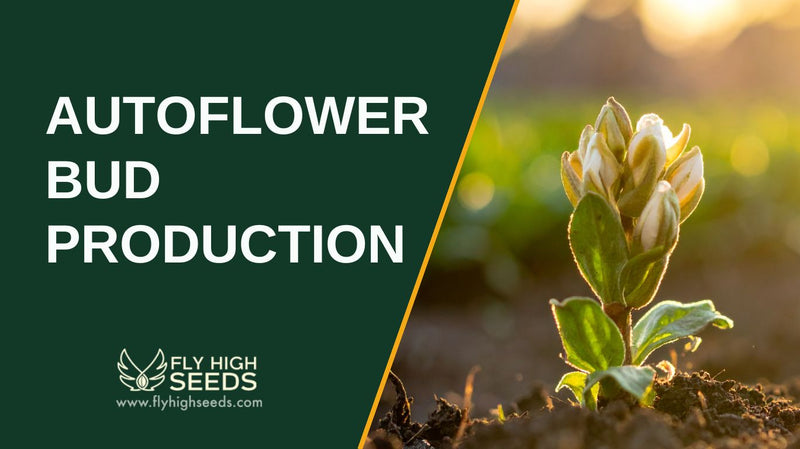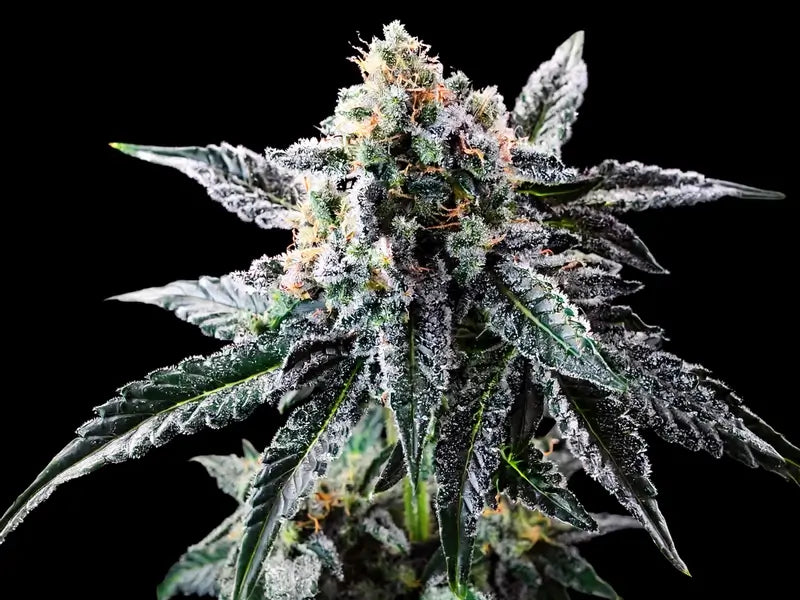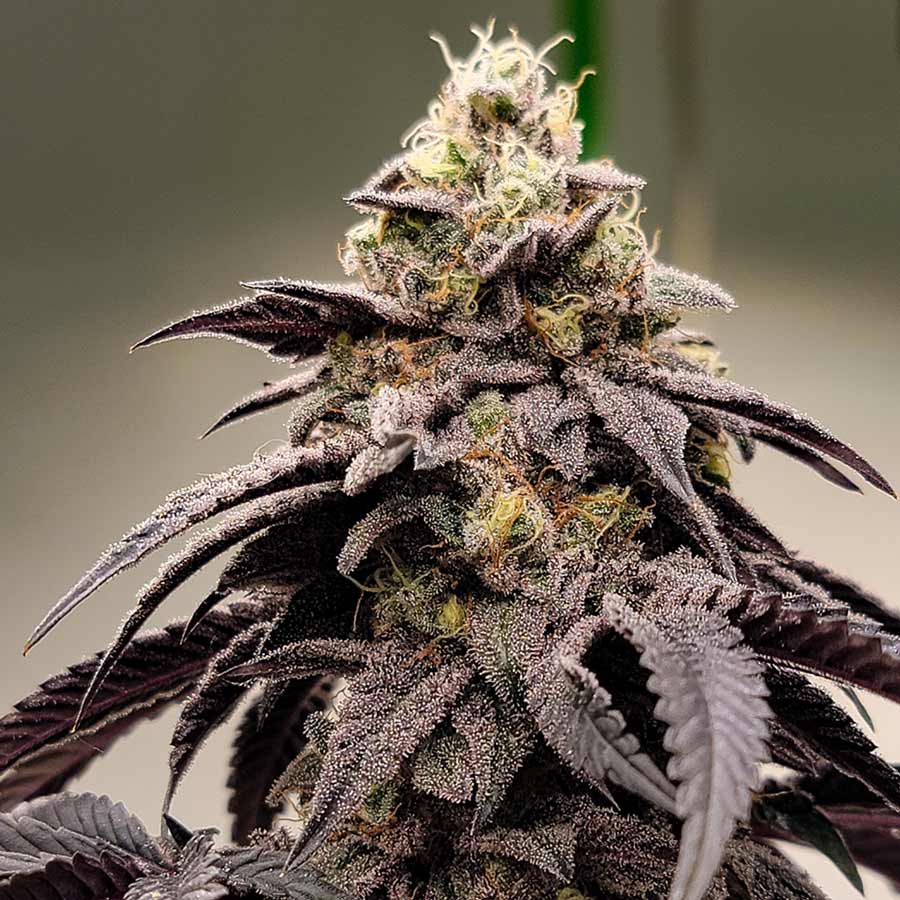Autoflower Bud Production: 7 Key Steps During Cultivation

Autoflower bud production is a rewarding process that hinges on understanding the unique life cycle, it needs of autoflowering cannabis plants. From germination to harvest, each stage plays a crucial role in shaping the quality, density, and potency of your buds. This guide highlights the key steps growers should follow to maximize yield and ensure healthy growth.
Table of Contents
What are Autoflower Seeds?
Autoflower seeds are a type of cannabis seeds that grow into plants capable of initiating the flowering stage automatically, without relying on changes in the light cycle. Unlike photoperiod plants that need specific light schedules to trigger flowering, Autoflowering seeds begin to flower based on age, typically within 2–4 weeks from germination.
Derived from Cannabis Ruderalis genetics, these seeds produce autoflowering cannabis plants known for their fast growth, shorter time to harvest, and ability to complete their life cycle quickly. Autoflower seeds are often feminized, ensuring they grow into bud-producing female plants, making them ideal for growers seeking a simpler, more resilient strain.
Key Steps for the Autoflower Bud Production
Producing high-quality buds from autoflowering cannabis plants involves a clear understanding of their rapid life cycle and unique growth habits. Unlike photoperiod strains, autoflowers demand timely care and optimized conditions due to their fixed schedule. Here’s a breakdown of the key stages and strategies to ensure healthy bud production.
1. Germination and Early Growth
Start by germinating autoflower seeds using a reliable method—paper towel, starter plugs, or direct soil sowing. The germination stage typically lasts 2–4 days, followed by seedling emergence. During this phase:
- Maintain temperatures between 70–75°F (21–24°C).
- Keep humidity around 65–70%.
- Use low-intensity lights (18–24 hours per day).
2. Vegetative Growth and Early Training
Autoflower plants enter vegetative growth rapidly, often within the first week. Because they switch to flowering based on age rather than light cycle, early growth is critical for future bud size. Key tips:
- Use a nutrient-light mix with higher nitrogen content.
- Apply Low Stress Training (LST) carefully if desired.
- Avoid transplant shock—start in the final pot size.
- Promote strong root development with healthy watering practices.
3. Flowering Stage Management

Once flowering begins (usually around week 3 or 4), plants require extra attention to fuel bud development. Here’s what to focus on:
- Switch to bloom nutrients rich in phosphorus and potassium.
- Reduce nitrogen to prevent nutrient imbalance.
- Adjust humidity to 40–50% to prevent mold.
- Ensure consistent airflow across bud sites with fans.
4. Light and Environmental Control
Even though autoflowers don’t rely on light cycle changes, providing optimal light exposure is still crucial:
- Use 18/6 or 20/4 light schedules for best results.
- Ensure light intensity is strong enough for full canopy coverage.
- Keep temperatures stable between 68–78°F (20–26°C).
- Avoid excessive heat or humidity fluctuations to protect trichomes.
5. Monitoring Bud Formation and Health
As buds swell, pay close attention to their development:
- Watch for signs of nutrient deficiencies or excess.
- Check for pests such as spider mites or aphids.
- Look out for the risk of mold in dense colas.
- Support heavy branches if necessary to prevent snapping.
6. Determining the Optimal Time to Harvest
Harvesting at the right time preserves thc levels and cannabinoid profiles. Signs that plants are ready for harvest:
- Pistils have mostly darkened and curled in.
- Trichomes appear milky with some turning amber.
- Leaves may yellow naturally as nutrients are pulled to buds.
7. Post-Harvest Tips for Better Buds
After cutting down your autoflower harvest:
- Hang buds in a dark, ventilated space with ~50% humidity.
- Dry slowly for 7–10 days to prevent harsh smoke.
- Cure in airtight jars for 2–4 weeks, opening daily at first to allow airflow.
How to Know When to Harvest Autoflowering Buds
Harvesting autoflowering cannabis at the right moment is crucial for preserving flavor, potency, and overall bud quality. Since these plants follow a fixed schedule, growers must look for visual and environmental cues to determine the optimal time to harvest.
- Trichome Color: Use a magnifying glass or jeweler’s loupe to inspect trichomes. When they appear mostly milky with some amber, the thc levels are at their peak buds are ready for harvest.
- Pistil Maturity: Around 70–90% of pistils (the hair-like structures on buds) should have darkened and curled inward.
- Bud Density: Fully matured buds will feel firm and dense to the touch, rather than airy or underdeveloped.
- Leaf Discoloration: Yellowing fan leaves near harvest time is normal as the plant redirects energy toward bud production.
- Weeks from Germination: Most autoflower strains are ready for harvest around 8–11 weeks from germination, depending on the strain and growing conditions.
- Flowering Time Completion: Check breeder information for expected flowering time and compare it with the grow calendar.
- Strain Behavior: Some autoflowering strains have a shorter time to harvest, while others may need a week or two longer—observe how each plant matures.
- Smell and Resin: A strong, pungent aroma and sticky resin build-up on buds and leaves signal harvest readiness.
Qualities of Good Autoflower Strains

Choosing the right autoflower strain is essential for a successful grow, especially if you want fast results, resilience, and strong bud production. Here are key traits to look for when selecting quality autoflowering strains:
- Stable Genetics: Reliable autoflower strains come from well-bred autoflowering seeds with consistent traits like uniform growth and flowering time.
- High THC Levels: Look for strains with potent thc content if you’re aiming for strong psychoactive effects or medicinal value.
- Fast Growth Cycle: Good strains complete their life cycle quickly, often within 8–10 weeks from seed, ideal for fast harvests.
- Dense Bud Production: Quality strains produce tight, resin-rich buds with well-developed bud sites and minimal fluff.
- Pest and Mold Resistance: Strong autoflowering genetics show resilience against common pests and the risk of mold, especially in variable climates.
- Adaptability: Good strains perform well both indoors and outdoors, and thrive in varied grow spaces with minimal intervention.
- Balanced Cannabinoid Profile: A desirable mix of cannabinoids (like THC and CBD) enhances the strain’s effects and medicinal benefits.
- Compact Structure: Many top-tier autoflowers grow short and bushy, perfect for stealth grows or limited vertical space.
- Flavor and Aroma: High-quality strains offer rich terpene profiles, contributing to a diverse range of flavors—from fruity to earthy to pungent.
Final Thoughts
Successfully producing buds from autoflowering cannabis requires more than just planting seeds—it demands a thoughtful approach through each phase of the plant’s rapid life cycle. From selecting the right autoflower seeds and managing nutrient intake to recognizing harvest cues and curing properly, every step contributes to healthy growth and potent bud production.
For those looking to improve their cultivation results, focusing on genetics, environmental control, and harvest timing can make a significant difference. Staying informed about strain traits and growth patterns is key to achieving consistent, high-quality yields with autoflowering plants.
Frequently Asked Questions
Can I clone autoflowering cannabis plants?
Cloning autoflowers is generally not recommended because they have a fixed life cycle. By the time a clone roots, it may already be close to flowering, limiting its potential for healthy growth and bud development.
Do autoflowers require specific soil types?
Yes, autoflowers thrive in light, well-aerated soil with good drainage. A mix low in nutrients, such as coco coir and perlite blends, works well to prevent nutrient burn during early vegetative growth.
Is topping a good training method for autoflowers?
Topping is risky for autoflowers due to their short vegetative stage. Stress from topping can slow growth and reduce yields, so low-stress training (LST) is typically a safer method.
How often should I water autoflowering plants?
Water when the top inch of the soil feels dry. Overwatering can stunt growth, so it’s better to water less frequently but deeply to encourage strong root development.
Do autoflowers need CO₂ supplementation?
While CO₂ can benefit any cannabis plant in high-light environments, it’s not essential for most small-scale autoflower grows. Maintaining proper airflow and temperature is usually sufficient.
Can I grow autoflowers outdoors year-round?
In warm climates with sufficient daylight, autoflowers can be grown outdoors throughout most of the year, as their ability to flower automatically isn’t dependent on seasonal light changes.
What’s the best container size for growing autoflowers?
A 2–3 gallon pot is usually ideal. Autoflowers don’t need large containers due to their compact size and short life cycle, and smaller pots help prevent overwatering.
Are autoflower seeds suitable for beginners?
Yes, autoflower seeds are excellent for beginners. Their shorter time to harvest is the minimal light schedule requirements and resilience to environmental stress that makes them easier to grow compared to photoperiod plants.



